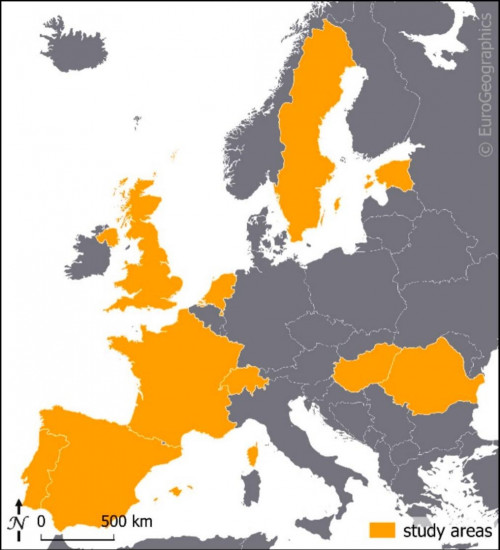Habitat fragmentation in agricultural landscapes poses a serious threat to biodiversity. While measures such as hedgerows and wildflower strips can improve ecological connectivity, little is known about how farmers decide where to implement them. To address this knowledge gap, a SHOWCASE study, conducted by the Leibniz Centre for Agricultural Landscape Research in collaboration with the Queensland University of Technology, employs a spatial choice experiment. The study investigates the factors that influence farmers’ decisions on the placement of linear biodiversity measures, ranging from farm and farmer characteristics to field and landscape features.
The study surveyed 471 farmers across several European countries involved in SHOWCASE, capturing diverse farming systems, landscapes and socio-cultural contexts. Using an online (and in some regions, printed) survey conducted from January to October 2023, farmers provided personal and farm-related data and participated in a spatial choice experiment to assess their preferences for placing biodiversity measures — either wildflower strips or hedgerows — under varying hypothetical field conditions. The experiment systematically altered single landscape or field characteristics across scenarios to isolate the factors influencing spatial decisions.
А robust data analysis approach was used, including multivariate imputation to handle minimal missing data and multinomial logistic regression to explore how various factors influenced farmers’ biodiversity placement choices across different field scenarios. To account for repeated measures, a generalised linear mixed model (GLMM) was also employed, incorporating random effects for individual respondents. While the models demonstrated good fit and reliability, limitations included a relatively small sample size for some choice options and potential misinterpretation of scenarios by participants, which may have introduced bias.
The results revealed that farmers’ choices for placing biodiversity measures were strongly influenced by both field characteristics (e.g., slope, soil quality, proximity to forests or roads) and regional socio-cultural contexts. While lengthwise edge placements were generally preferred under baseline conditions, farmers from eastern and southern Europe showed distinct preferences for subdividing fields or distancing measures from existing features. Decisions were significantly shaped by biodiversity attitudes, regional background and practical considerations such as machinery size, with flower strips being valued for their ecological benefits and aesthetic appeal, and hedgerows being preferred for their functional roles, such as providing wind protection and creating habitat barriers.
Considering this, the research highlights that farmers’ spatial decisions on biodiversity measures are shaped by a balance between operational efficiency, environmental priorities and socio-cultural context, with preferences influenced by factors such as field characteristics, machinery size, and regional traditions. The findings underscore the importance of designing agri-environmental strategies that are both ecologically effective and practically viable.
In order to enhance habitat connectivity, policies should prioritise landscape-scale spatial planning, incentivise coordinated biodiversity measures, such as continuous hedgerows, and support collaborative agri-environmental schemes through financial and governance reforms. Engaging stakeholders and aligning conservation strategies with farmers’ values and preferences are essential for cost-effective implementation, with behavioural insights and ecological data playing a key role in designing efficient, region-specific connectivity networks.
Read the full paper here.
Image: Fig. 1. Overview of study areas: Estonia, France, Hungary, Portugal, Romania, Spain, Sweden, Switzerland, the Netherlands, and the UK.
